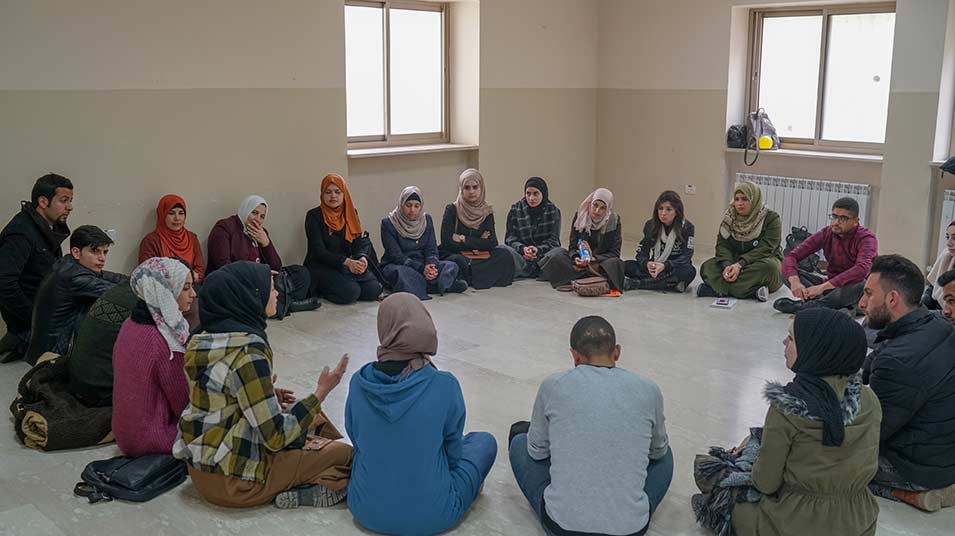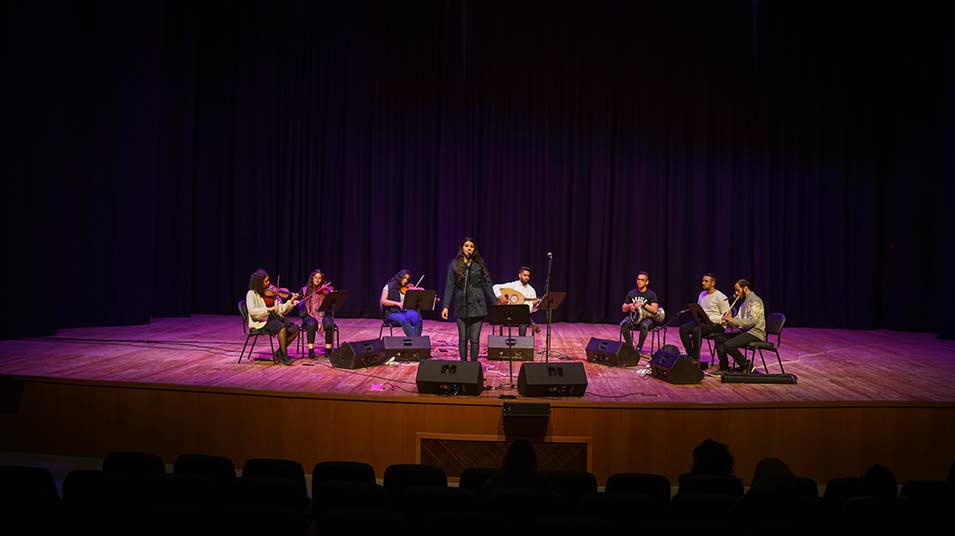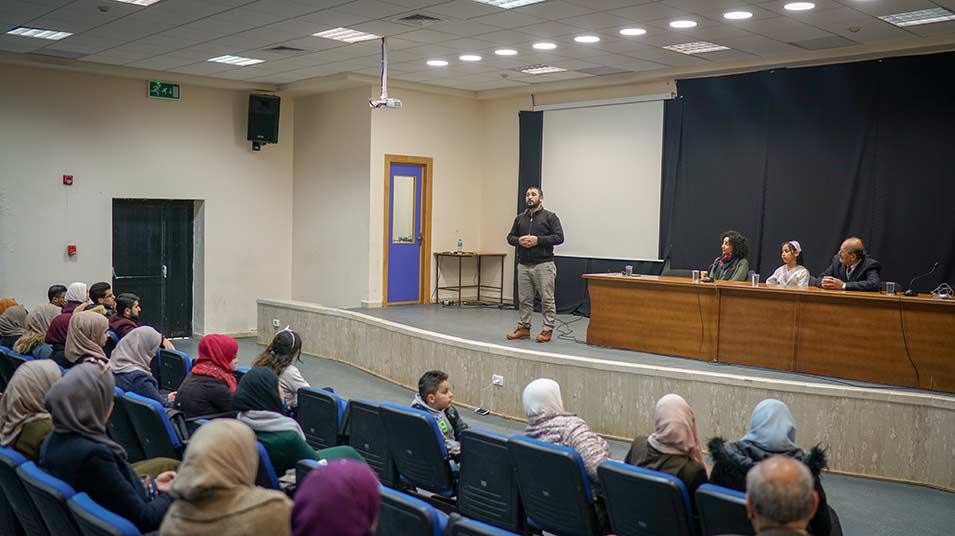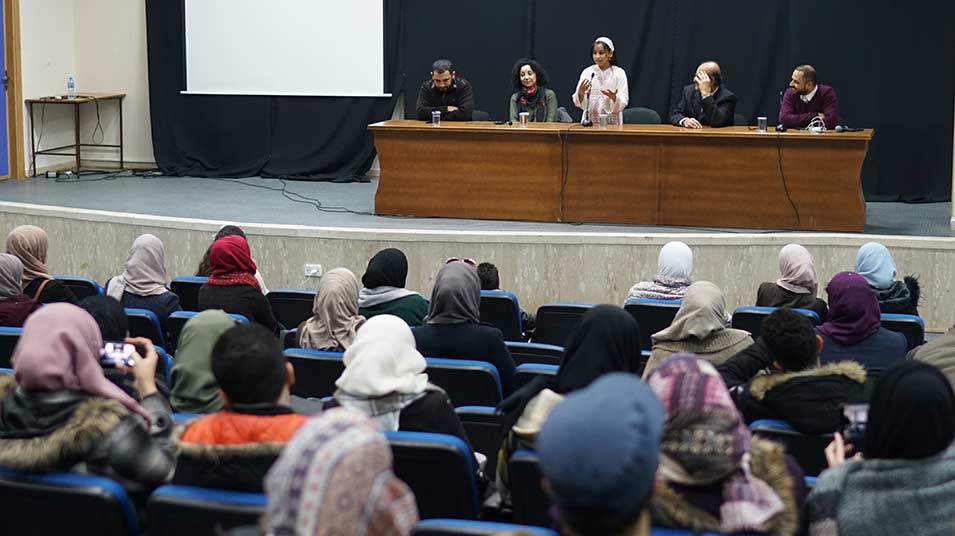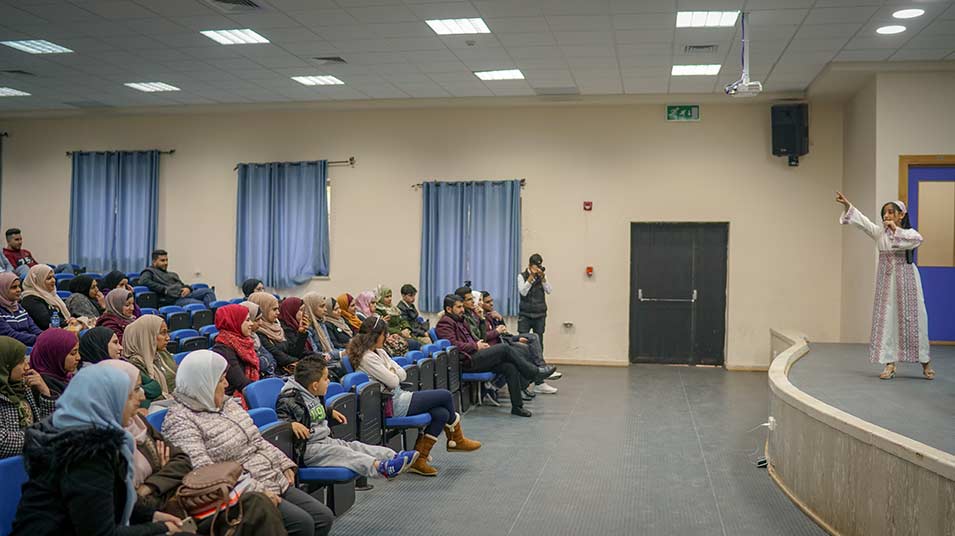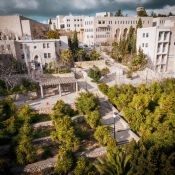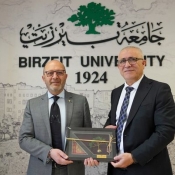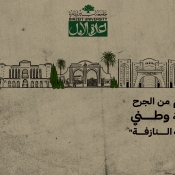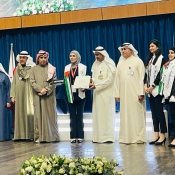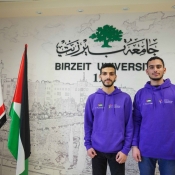University community marks Land Day with folktales, musical performances
Birzeit University’s community commemorated Land Day with readings and discussions, musical performances, and storytelling sessions on Saturday, March 30, 2019.
Land Day has been observed annually in Palestine since 1976 when protests erupted against an Israeli land grab of areas in the Galilee for settlement building. The plan for the Israeli expropriation − which included around 20,000 dunams of land owned by Palestinians in Sakhnin, Arraba, and Deir Hanna − was accompanied by a curfew that went into effect on March 29, 1976.
The plan was met with a general strike and protests on March 30, as the Israeli army used armored vehicles and tanks to quell the revolt. Six Palestinians were killed and 49 others severely wounded by Israeli forces on that day, and around 300 protesters were arrested.
To commemorate this day and to reiterate the Palestinian right to their land, the Deanship of Student Affairs organized community reading sessions in which 90 students from Birzeit University and Hebron University were divided into groups to discuss books and articles on the history of the Palestinian quest for freedom and on Israeli violations of human rights and land appropriation.
A musical performance by Maqamat al-Quds − a group of students from the Edward Said National Conservatory of Music who performed Palestinian folk and national songs − followed the reading sessions.
Later events on this day included a session that celebrated Palestinian folktales and featured Haneen Tarbeyeh, a storyteller from Sakhnin; Hamzeh Akrabawi from Jenin; and Maria Turkman, an 11-year-old narrator from Jenin. The stories they presented focused on the right of Palestinians to their land and on their strong relationship with it.
Sharif Kanaana, a professor of anthropology specialized in heritage and culture who served as a panelist in the session, emphasized the importance of storytelling as one of the elements that unite Palestinians around their shared identity and heritage and reconnect them to their roots.

